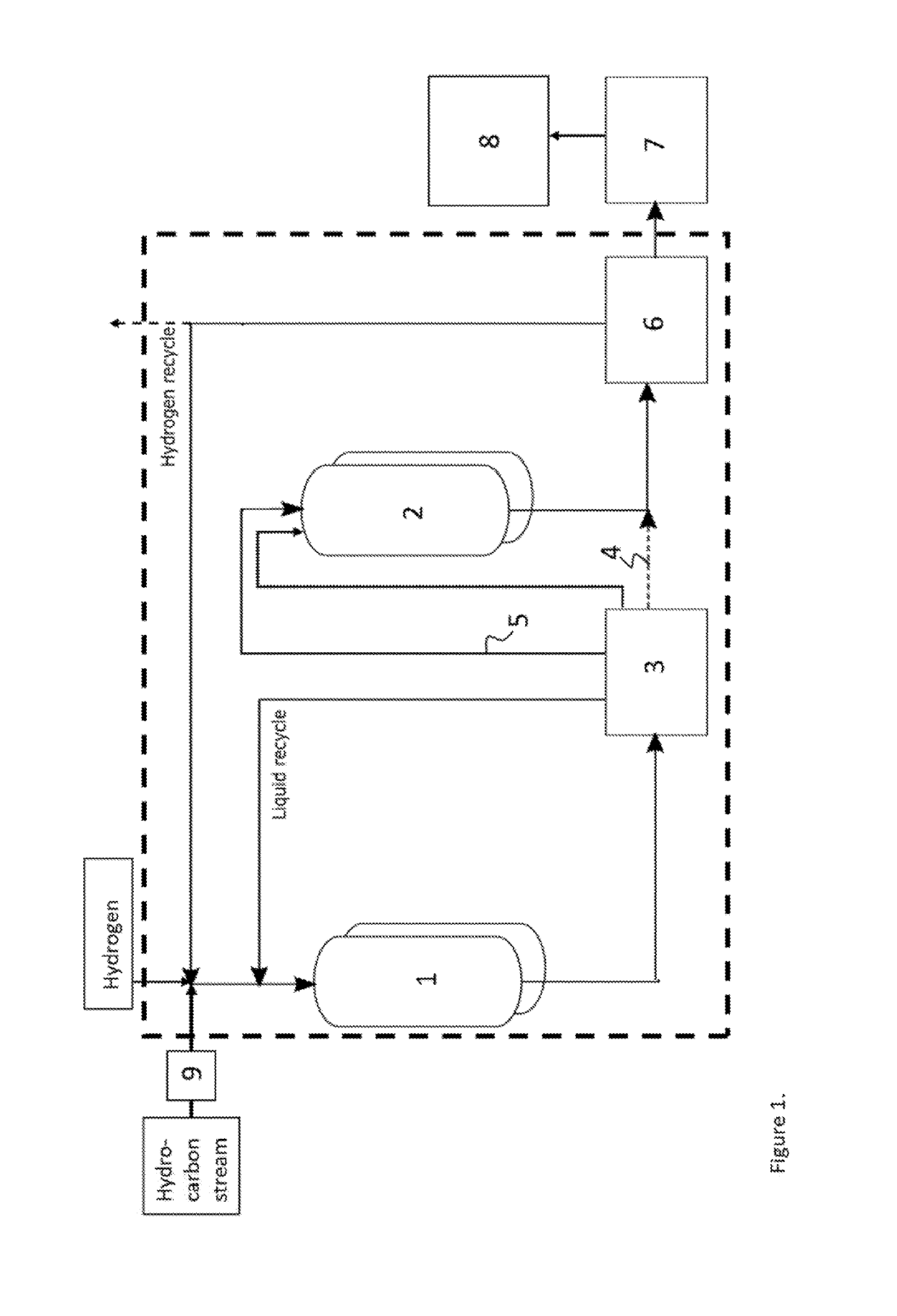Process and apparatus for hydrogenation
a hydrogenation process and hydrogenation technology, applied in the field of hydrogenation process, can solve the problems of reducing both energy and hydrogen consumption, and achieve the effects of reducing campaign change time and unit downtime, reducing energy consumption and saving investmen
- Summary
- Abstract
- Description
- Claims
- Application Information
AI Technical Summary
Benefits of technology
Problems solved by technology
Method used
Image
Examples
example 1
, Light Olefinic Naphtha and Middle Distillate Feed Containing Aromatics as Feeds
[0109]The hydrogenation device corresponded to the embodiment described in FIG. 1. The first reaction zone comprised two hydrogenation reactors, which were operated in series. The front reactor had higher temperature increase due the exothermic reactions taking place predominantly therein. Temperature increase in the front reactor was controlled by diluting reactor feed with liquid recycled from the reactor outlet to inlet. The second reaction zone inlet temperature was not controlled but determined by the front reactor outlet temperature.
[0110]The reactor section feed consisted of fresh feed, liquid recycle, make-up hydrogen and recycle gas. Liquid recycle diluted contents of the reactive components and thus controlled temperature increase. Make-up hydrogen was added to cover hydrogen consumption in the reactions. Recycle gas was adjusted to maintain adequate hydrogen to reactive ratio in the reactor i...
example 2
of all Cases at the Same Pressure and Campaign Change without Depressurisation
[0127]The hydrogenation device corresponded to the embodiment of example 1. The device was designed to operate with two different feeds. Feed A was a light mainly C5-hydrocarbon containing olefinic naphtha and feed C a middle distillate hydrocarbon stream containing aromatic compounds. Operation with different feeds was carried out in relatively short campaigns of two or three weeks. It was found that all feed cases comprising light C5 hydrocarbons as well as heavy gasoil cases can be operated at same pressure ranging from 2 to 6 MPa, when operating temperature and liquid recycle rate are optimized. The common operating pressure for all cases is advantageous in feed pump, recycle gas compressor and make up hydrogen compressor design.
[0128]Campaign change is started by reducing liquid levels in all vessels. Remaining liquid is pushed by hydrogen pressure from high-pressure reactor section to low pressure di...
PUM
| Property | Measurement | Unit |
|---|---|---|
| temperature | aaaaa | aaaaa |
| pressure | aaaaa | aaaaa |
| boiling point | aaaaa | aaaaa |
Abstract
Description
Claims
Application Information
 Login to View More
Login to View More - R&D
- Intellectual Property
- Life Sciences
- Materials
- Tech Scout
- Unparalleled Data Quality
- Higher Quality Content
- 60% Fewer Hallucinations
Browse by: Latest US Patents, China's latest patents, Technical Efficacy Thesaurus, Application Domain, Technology Topic, Popular Technical Reports.
© 2025 PatSnap. All rights reserved.Legal|Privacy policy|Modern Slavery Act Transparency Statement|Sitemap|About US| Contact US: help@patsnap.com

